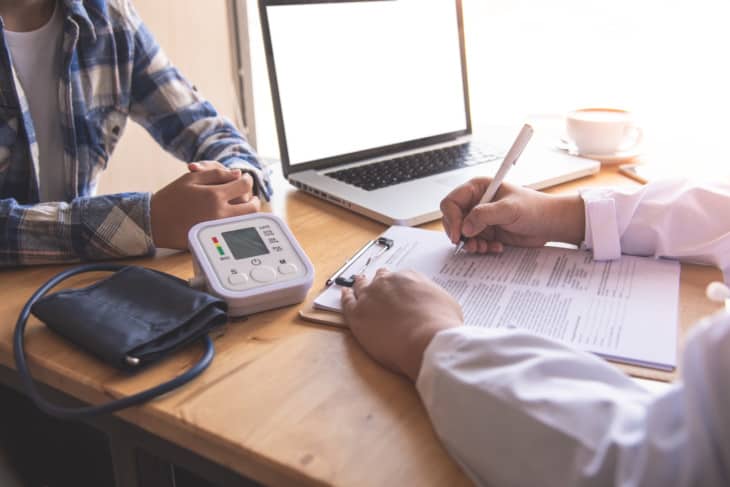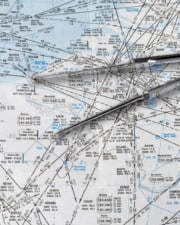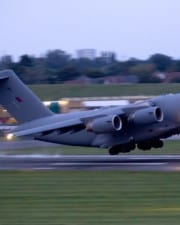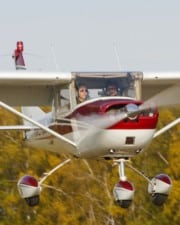Flight physicals can be a source of anxiety for many pilots. For example, should you list your anxiety about a flight physical as a medical condition? However, flight physicals can be straightforward, and any issues found don’t have to be the end of the story.
Table of Contents
A flight physical is a generic term used to describe the medical exam that all pilots need to complete every so often. Civilians with pilot licenses must meet specific medical criteria, and military pilots and air traffic controllers also undergo flight physicals. Upon successfully completing a flight physical, a medical certificate is issued.
Why Do Pilots Need a Flight Physical?
Safety is paramount in aviation. Healthy pilots ensure their own safety, the safety of their crew and passengers, and the safety of people on the ground. If a pilot became medically incapacitated during flight, this safety would be at risk. Therefore, pilots are medically certified to ensure they don’t have any known conditions that could affect their ability to fly the aircraft safely.
For example, the pilot and a passenger were killed when the pilot flew his aircraft into power lines while approaching the airport. The NTSB investigation revealed that the pilot did not have a current medical certificate, was blind in one eye, and was under the influence of drugs.
In a similar story, an aging pilot continued to fly with a vision problem, even though his medical certificate had expired. He lost vision during his last flight and fatally crashed on a beach.
Getting a medical certificate can be a stressful experience for many pilots since the consequences of not “passing” are severe. Pilots that can’t get a medical certificate may lose their beloved careers or their treasured hobby.
What Does a Flight Physical Consist Of?
First, pilots must complete a medical application. On this application, a pilot makes statements about their medical history. This is done before visiting the Aviation Medical Examiner (AME).
The application is completed using an online form through MedXPress. You can work on the application for up to 30 days. After you have submitted the application, the data stays in the system for 60 days. You must see an AME within 60 days to complete the process; otherwise, your data will be automatically deleted.
Next, pilots schedule an examination with an Aviation Medical Examiner (AME). The AME is an FAA-designated doctor. During the medical exam, the AME will record your height and weight. In addition, the AME will note over 30 different data points, including your ears, heart, and skin. Pilots must pass vision and hearing tests, in addition to drug tests. Pilots are also examined for psychiatric issues.
There are different grades of flight physical for varying degrees of pilots. For example, in the United States, many sport pilots only need to get one flight physical. On the other hand, an airline transport pilot must undergo a rigorous flight physical (usually) every year.
Federal Aviation Regulations (FARs) specify the medical standards that pilots must meet for each grade of medical certificate. Medical standards and certifications are covered in FAR Part 67.
If you don’t meet the standards, the FAA may work with you and grant you an FAA waiver. Thousands of pilots don’t meet the initial standards but have acquired certification. For example, some deaf pilots and amputees have completed a Statement of Demonstrated Ability (SODA) and can safely fly.
How Long Does it Take to Get a Flight Physical?
Depending on your AME’s availability, you could complete the whole process in a day or two. Pilots must first complete the medical application online. This can be done at home and be completed in about half an hour. The examination and meeting with the AME usually take about half an hour.
Next, the AME will either issue your certificate, advise you that further testing is needed, or deny you. For example, if you note that you fainted once in high school on your application, the AME might want to order more tests to ensure you don’t have a medical condition that would preclude safe flight.
How Much Does a Flight Physical Cost?
A medical exam with an AME costs between $100-$300. The rate is determined by the physician–not the FAA.
Grades of Medical Certificate for Grades of Pilot License
The FAA issues three classes of medical certificates. Airline Transport Pilots (ATPs) need a first-class medical. Pilots under 40 need a first-class medical exam every 12 months, and pilots over 40 need a medical exam every six months. Pilots over 40 must have an ECG test every 12 months to keep their first class medical.
A second-class medical certificate is for pilots who fly commercially. Commercial pilots must have a medical exam every 12 months.
A third-class medical certificate is for private, student, and recreational pilots. A third-class medical is required every 60 months for pilots under 40 and every 24 months for pilots over 40.
BasicMed
BasicMed is a more recent option that is suitable for hobby pilots. BasicMed offers pilots an easier way to be medically cleared for flight. To use BasicMed, pilots must have a current driver’s license. In addition, they must have held a medical certificate that was valid any time after July 15, 2016, and must not have been denied a medical application.
Pilots must complete a medical exam every four years. The exam can be any physician and doesn’t have to be an AME. Pilots must also complete an online medical course every two years.
Pilots flying under BasicMed have certain restrictions. They can only fly aircraft certified for six people or fewer. They can only carry five passengers. The aircraft must weigh 6,000 pounds or less.
Flights can only be in the U.S. and The Bahamas. In addition, flights must be less than 18,000 feet MSL and less than 250 KIAS. Finally, BasicMed pilots cannot fly for hire.
Pilots must be medically certified for flight operations. The process is straightforward for most pilots. If you discover a medical issue, the FAA may allow you to continue to fly if you can demonstrate ability.
References ▾
Related Posts













